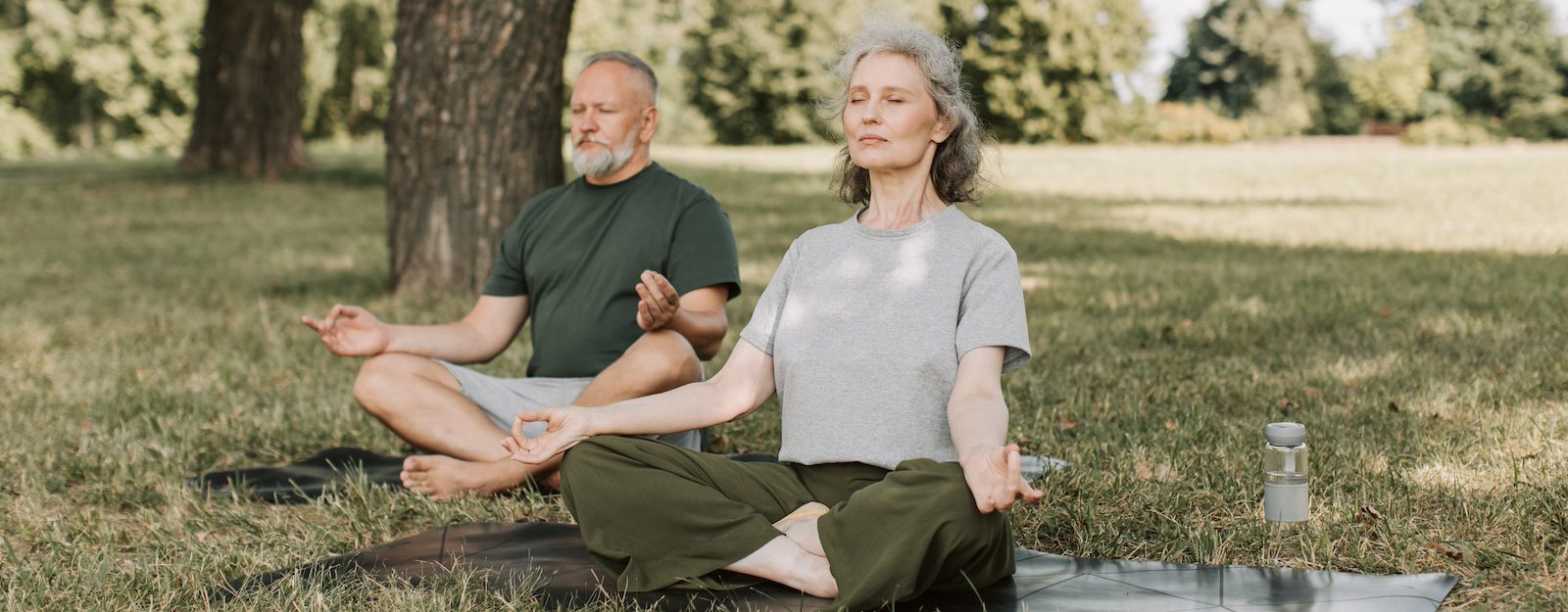Have you ever noticed that when you’re stressed, your breathing can be shallow and high up in your chest? Shallow breathing doesn’t allow you to take in enough air. But a specific type of breathing called diaphragmatic breathing can counter this by shifting your breath lower into your abdomen.
Your diaphragm is a dome-like muscle that sits under your lungs and helps you breathe. This muscle can function involuntarily, so it works even when you don’t think about it. To visualize this process, think of your belly as a balloon. When you inhale through your nose you fill the balloon while your chest remains quiet. When you deeply fill your belly with air, your diaphragm contracts. And then when you exhale through your mouth (release air from the balloon), your diaphragm relaxes and air escapes.
Practicing diaphragmatic breathing has been linked to many health benefits. These include improved exercise capacity, stress management, and gastrointestinal (GI) health. This type of breathing allows you to inhale more oxygen-rich air and exhale air that contains waste gases, like carbon dioxide. Because your breathing muscles do not have to work as hard during diaphragmatic breathing, your cells receive more oxygen. During exercise this benefit can help sustain your workout.
Evidence shows that practicing this type of breathing for just 15 minutes each day for two weeks can increase parasympathetic nervous system activity, which is linked to stress reduction. Diaphragmatic breathing is also thought to decrease levels of the stress hormone cortisol. Additionally, this type of breathing stimulates the vagus nerve, which runs from your brain to your abdomen. This nerve sends information to your digestive system, which helps manage digestive distress. While diaphragmatic breathing is not a stand-alone treatment for any condition, it also supports improved blood pressure, core muscle stability, COPD symptoms, and chronic pain.
There are a few approaches to this breathing style, and this article will take you through three distinct techniques. Try each one to determine which feels best for you.
1. Slow Breathing
In this method your inhales and exhales will generally last for about six seconds each. During the exercise, try to keep the hand placed on your chest still and move the hand on your belly.
- Find a comfortable position lying down, seated, or standing.
- Place one hand on your chest and one hand on your belly.
- Inhale through your nose for about six seconds and fill your abdomen with air.
- Exhale through your mouth for about six seconds. Engage your core to push the air out.
- Repeat for up to 15 minutes.
2. Holding the Breath
With this technique try to pause between your inhales and exhales and sustain your exhales. This can help deepen your breathing capacity.
- Find a comfortable position lying down, seated, or standing.
- Place one hand on your chest and one hand on your belly.
- Inhale through your nose for about four seconds and fill your abdomen with air.
- Hold your breath for about two seconds.
- Exhale through your mouth for about six seconds. Engage your core to push the air out.
- Repeat for up to 15 minutes.
3. Pursed Lip Breathing
This technique is beneficial in general and can be particularly supportive of lung conditions, including COPD.
- Find a comfortable position lying down, seated, or standing.
- Place one hand on your chest and one hand on your belly.
- Inhale through your nose for about four seconds and fill your abdomen with air.
- Exhale through pursed lips (make a “shhh” noise) for about six seconds. Engage your core to push the air out.
- Repeat for up to 15 minutes.
Tip: Take note of how you feel before and after your breathing practice. We hope that in addition to utilizing an evidence-backed technique to optimize your health, you’re doing something that helps you feel great!

